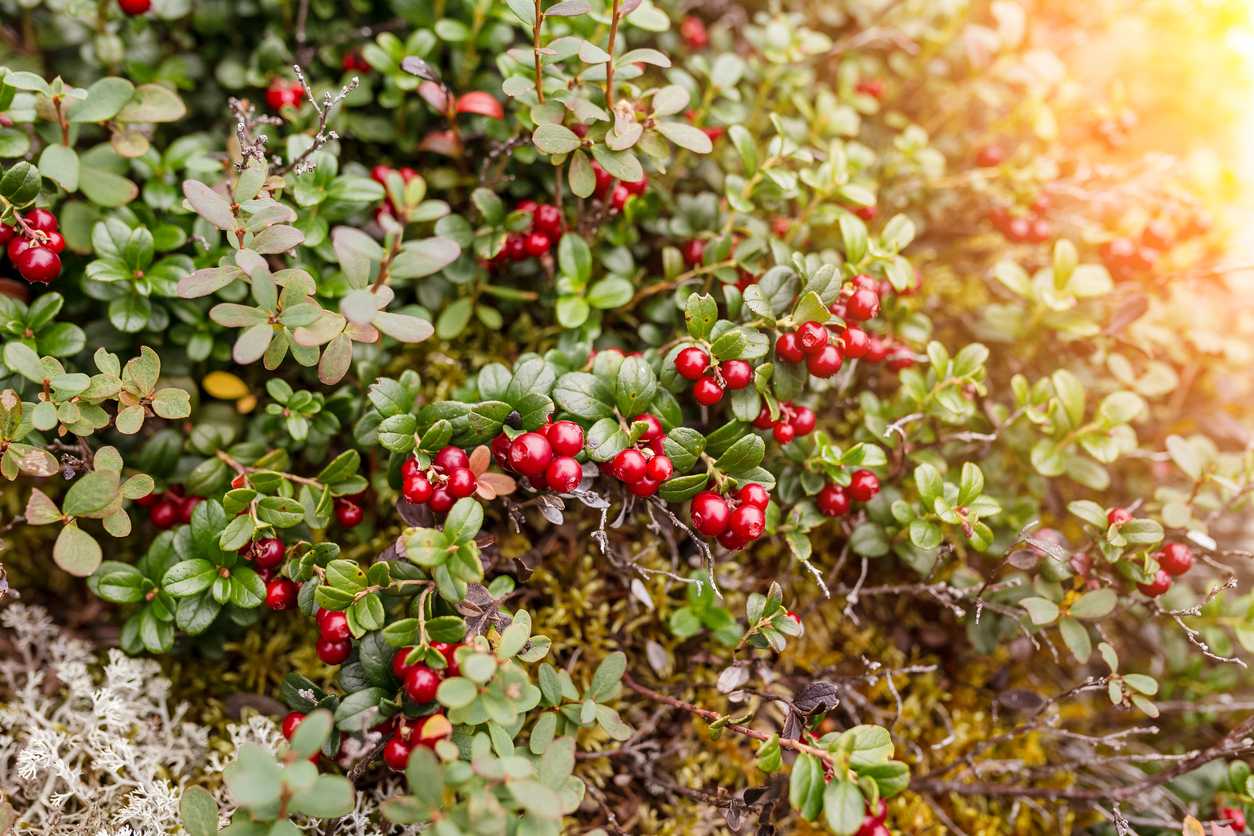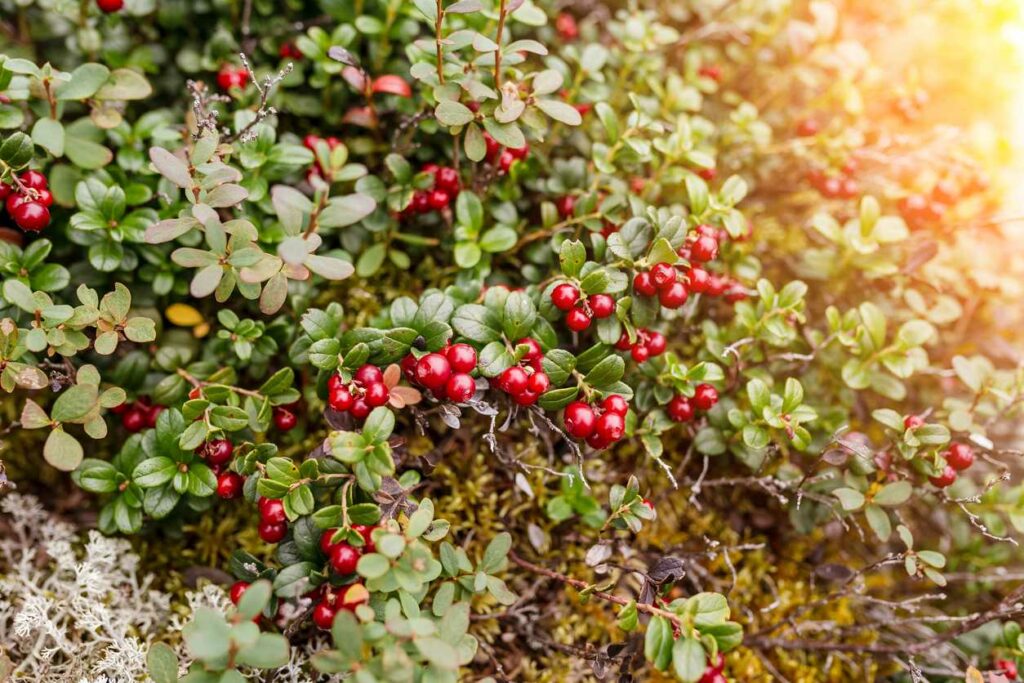Cranberry Vine Care – How To Grow Cranberries In Your Garden
Many people ask why cranberries? But the real question should be why not cranberries. The cranberry vine is a hardy evergreen that self-pollinates and hardly requires much pruning. These perennials stay in your garden for decades and keep your kitchen stocked up with their delicious fruits.
Homegrown cranberries when roasted become the best side dish for your Christmas dinner. Many people have them with roasted pork and swear by them. Cranberry sauce is a traditional delicacy in many cuisines and you can add cranberries to bread, cakes, ice cream, and just about any dessert you can think of.
So it might come as a surprise to you that you can actually grow the tarty cranberries in your garden. Here we cover everything you need to know to start your own cranberry vine and feast on their fresh or stored fruits all year round.
Cranberries at a Glance
American cranberry (Vaccinium macrocarpon) belongs to the heath family just like blueberries. It is a hardy species compared to its cousin Vaccinium oxycoccus that hails from Europe. American cranberry has hardiness zones between 2 and 7 making it suitable for growing in mild to cold climates without any issues. As a perennial plant, it has a woody structure and is low growing. The vine has rhizomes for roots and has runners that grow to about 6 feet long.
Cranberries go by many names and have an established place in history. They are known as American bog cranberry in reference to the way they are commercially harvested. Another name, pilgrim cranberry, refers to the first time cranberry was mentioned in a cookbook in 1663.
Their bloom time is usually in the spring. The flowers are usually pink and look like the head of a crane. This explains why they were called that. The flowers self-pollinate although bumblebees play a major role in this process. The bees usually shake the pollen free as they move from flower to the next.
While you can consume raw cranberries, their tarty and a little acidic taste puts some people off. They have their uses in the kitchen where you can bake them in cookies, cheesecake, pies, and make juice and smoothies. The fruits are rich in vitamin C and are packed with antioxidants. Their health benefits extend from protecting the liver to lowering blood pressure.
Cranberry Vine Varieties
Since the settlers discovered cranberries they started cultivating them with enthusiasm. As a result, many cultivars have made their way to the market over the years. Currently, there are over one hundred cranberry varieties that you can grow in your garden.
- Pilgrim: Known for its resistance to disease and weather conditions, this popular cultivar has dark pink flowers. It produces a decent crop every year and the fruits have dark purple skin and a slightly acidic taste.
- Scarlet Knight: This cultivar has sweeter fruits than the original species and the cranberries are usually red. It yields a good crop each year and the fruits are larger than average and have a long shelf life. This comes in handy when you store the fruit for use all year round.
- Early Black: One of the earliest hybrids to ripen. It has dark red berries that look almost black when ripe. By August the berries are ready to harvest and have a sweet taste with a slight tang. This cultivar grows in just about any soil type and is easy to care for.
- Mullica Queen: Another designer cultivar that produces a high yield. The vine is a little coarse and flower buds come out in groups. It has a fast growth rate and establishes quickly. The berries themselves are bright red but not as sweet as Early Black.
- Stevens: An established cultivar that has been in the market for a while and has gained the trust of cranberry growers. The berries are red and quite juicy. You won’t have issues with false blossom as is the case with some other varieties and the flowers when pollinated will fade and be replaced with berries.
All of these cultivars were developed to resist disease and handle the cold weather more efficiently. So when you pick a hybrid, you only need to focus on the taste of the berries and their color.
How to grow Cranberries
While all these cultivars and hybrids are suitable for the mild to cold climates of North America, they differ in some subtle ways. These differences will come to light when you try to grow the cultivar. From the best time to plant to harvest time, you’ll need to check the specific details of the cultivar before you plant it. Here are general steps that apply to every cranberry vine you grow.
- The best time to plant cranberries depends on the weather conditions in your area. If you get mild to warm winter, you can plant it in the fall. Otherwise, spring is the ideal time to grow it.
- In the spring, wait for the last frost and give it two weeks before you plant it.
- Cranberries need a special bed to grow in. You can use an old bathtub and fill it with soil.
- Work the soil weeks before it’s time to plant cranberries. Break the surface and add a large portion of acidic peat. Cranberries prefer acidic soil.
- Make a hole in the bed deep enough to take the whole root ball of the plant and twice as wide. Water the hole to make it moist.
- Place the plant in the hole and make sure the soil level is the same as the original soil mark the plant came with.
- Add aged compost to the hole and fill it with soil until the plant is standing upright. Pack the soil to push out air pockets.
- Water the soil and add a fertilizer rich in phosphorus to give the plant a good start.
- Make sure the soil is moist all the time in the first few weeks until the plant establishes. Don’t overwater or cover the bed with water. It will kill the plant.
Cranberry Vine Care
You might have heard that cranberries like to be flooded with water. That’s a misconception. Commercial growers flood the beds with water when it’s time to harvest the berries not while they’re growing. In your garden, you’ll treat the cranberry vine just like you’d any other perennial.
Sanding
Usually, we would talk about the soil and pH levels. But with cranberries, sanding is an important part of their care and maintenance. You’ll need to add about an inch of sand to the topsoil to prevent weed growth and help to establish the runners. You might have to do that once a year or every couple of years. Whenever the bed runs out of the sand, add some in the spring before the growing season. As for pH levels, this evergreen is not fussy as long they are low levels.
Watering
Now that we have dispelled that myth about flooding the bed for cranberries, you should know that these plants need the soil moist. You cannot let the soil dry between irrigations. This could kill the plant. It’s one of the reasons you add plenty of peat moss to the soil to help with water retention. On average, you should give it about one inch of water on a weekly basis. Don’t overwater the soil since that would lead to root rot, a common problem that gardeners have. In the summer months, you can water it in the early morning before the sun gets too hot and the water evaporates quickly.
Fertilizing
With so much peat moss and organic compost in the soil, you’ll have little need for fertilizers. However, if you want a good crop, you can apply a general-purpose fertilizer in the early spring. Use it sparingly around the base of the plant without actually touching it. Water immediately after applying. Horticulturalists recommend that you use nitrogen-rich fertilizers in the first two years of the life of the plant to encourage robust growth and fight diseases. This helps runners grow and reach their full length. Flowers and berries grow out of buds on the runners. So you need healthy growing runners for a good crop.
Pests and Diseases
Unfortunately, many pests find the leaves and berries of cranberries just as delicious as well. The two main pests to watch out for are cranberry fruitworms and cranberry weevils. Cranberry fruitworms are the larvae of a moth that nest on the unripe berries. As the larvae grow, they make holes in the berry and feed on its juice. Ladybugs are the natural enemy of cranberry fruitworms.
The other pest is cranberry weevils. These tiny beetles lay their eggs in the cranberry flowers. When they hatch the little insects feed on the blooms and kill them. You’ll need to use an organic herbicide to get rid of this infestation.
As for diseases, there are three main problems that you have to watch out for.
- False Bloom: A common issue you might have with cranberries. It’s caused by a virus that leads to an abundance of flowers that would die without developing fruits. There’s no cure for this disease and you should pick a hybrid that resists false blooms.
- Leaf Spot: A fungal infection caused by overly humid conditions in the soil and air. You will see red spots on the upper side of the leaf and a white fungus on the bottom side. Remove the infected leaves and make sure the plant gets plenty of ventilation.
- Rose Bloom: Another fungal infection that affects the new shoots, leaves, and even berries. Use a fungicide to treat the spread of this infection.
Harvesting
A good sign that your cranberries are ready to harvest is when they turn deep red and feel firm between your fingers. To make sure the berry is ripe, drop it to the floor. If it bounces then it’s ripe. If it lies flat on the floor, then it’s not ready to harvest yet.
Experts recommend you leave the berries on the plant until the first frost. Frost usually sweetens cranberries and doesn’t damage the fruits. You’ll have to pick them up by hand like you would any other fruit. Discard any soft or damaged berries. To preserve your cranberries you can wash and freeze them. They will stay fresh for up to 10 months after harvesting.

